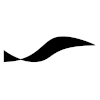Blender
Introduction
Blender (http://blender.org) is a 3D modelling and animation application. Nowadays I use it for 3D printing, either by creating models from scratch or by modifying the mesh structure of objects that I created in a higher-level modelling tool, like FreeCAD, which hides the mesh from the user. For example, support structures can be added to overhanging or convex parts of an object to improve print quality.
Usage Tips
- Customize the layout of the areas by dragging the separator lines between areas. Merge two areas or pull out a new one by dragging the handles located in the lower left corner of each area. See the documentation on arranging areas.
- Enable the setting Rotate Around Selection, which you find under the Interface tab of the User Preferences window.
- Group logically related objects together. This will prove especially useful when linking library objects into another file. Read the documentation on grouping objects.
- For 3D printing related functions enable the “3D Print Toolbox” add-on. In the “User Preferences” window, under the “Add-Ons” tab, select the “Mesh” panel and enable the 3D Print Toolbox, which creates an additional tab in the Tool Shelf. The 3D Print Toolbox features a button for checking and correcting manifold problems. A manifold mesh is a closed mesh that models a realistic object. Models for 3D printing should consists of manifold meshes.
- Use Modifiers. When a modifier configuration becomes final use the Apply button to make the changes to the mesh permanent and remove it from the modifier stack, which eases rendering performance.
- Use the ray-tracing Cycles renderer for rendering production images with realistic lighting.
- Avoid breaking paths to linked image files or other Blender files when moving files to different folders. You should first create copies of the files and place them in folders such that the relative paths stay the same. Then open the Blender File view in the Outliner area and make changes to the file paths. Read this thread on Stack Exchange. You could also solve this problem by temporarily switching from storing relative paths, which is Blender's default setting, to storing absolute paths. See the Save & Load section under the File tab in User Preferences.
Documentation and Tutorials
Shortcuts
In order to become productive you need to use Blender's shortcut keys.
| keys | action | works in |
|---|---|---|
| T | Toggles visibility of the (infrequently used) tool shelf panel | mesh and object mode |
| N | Toggles visibility of the properties panel | mesh and object mode |
| S | Scales selection around the set pivot point. Press X, Y, or Z to constrain to a specific axis. Type number for exact scale. |
mesh and object mode |
| G | Move selection with mouse parallel to projection plane. Press X, Y, or Z to constrain to a plane. |
mesh and object mode |
| CTRL + G | Creates a group for the selected objects. | object mode |
| SHIFT + G | Shows menu where you can select all objects that are grouped with the active object. | object mode |
| L | Selects all vertices/faces linked to the vertex/face under the cursor | mesh editing mode |
| L | Makes externally linked object a local object | object mode |
| SHIFT + SPACE | Toggle fullscreen area | any mode |
| SHIFT + C | Snaps cursor to center and fit all objects into view. | object mode |
| Q | Shows pie menu to select view position (front, top, bottom, etc.) | any mode when pie menu enabled |
| Z | Shows pie menu to select view mode (wireframe, solid, etc.) | any mode in 3D view screen |
| P | Creates a separate mesh from selection | mesh editing mode |
| CTRL + B | Activates the bevel tool | object mode |
| CTRL + E | Shows menu with edge operations | mesh editing mode |
| CTRL + V | Shows menu with vertex operations | mesh editing mode |
| CTRL + F | Shows menu with face operations | mesh editing mode |
| CTRL + TAB | Shows menu for mesh selection mode (vertex, edge, face) | mesh editing mode |
| C | Circle select | mesh editing mode |
| B | Box select | mesh editing mode |
| CTRL + LMB | Lasso select | mesh editing mode |
Create custom shortcuts for operations you do frequently and that have no standard shortcut. To create a custom shortcut open the Input tab of the User Preferences screen, expand the area for which you want to create the shortcut (e.g., "3D View" → "Mesh"), scroll down the list of shortcuts to the "Add New" button and click it. Expand the newly created shortcut item, enter the Python code for the shortcut action, enter the shortcut key and the optional modifier key (e.g., Shift or Ctrl or both).
| keys | action | works in | setup |
|---|---|---|---|
| SHIFT + Q | Toggles "Selection to Visible" | mesh editing mode | command: wm.context_toggle attributes: space_data.use_occlude_geometry |
| SHIFT + U | Subdivide | mesh editing mode | command: mesh.subdivide |
| ] | Switches to vertex selection mode | mesh editing mode | command: mesh.select_mode type: Vertices action: Toggle |
| [ | Switches to face selection mode | mesh editing mode | command: mesh.select_mode type: Faces action: Toggle |
| SHIFT + [ | Switches to edge selection mode | mesh editing mode | command: mesh.select_mode type: Edges action: Toggle |
| SHIFT + F | Flips normals | mesh editing mode | command: mesh.flip_normals |
